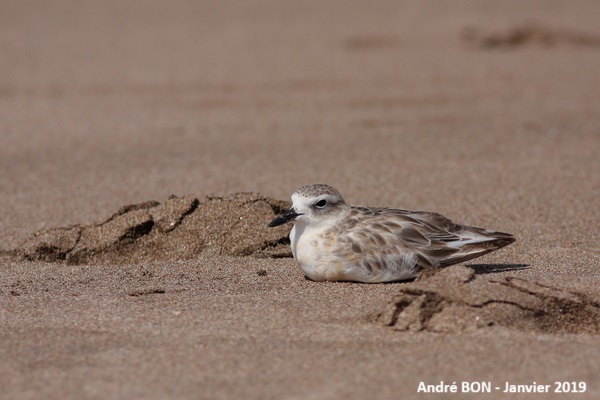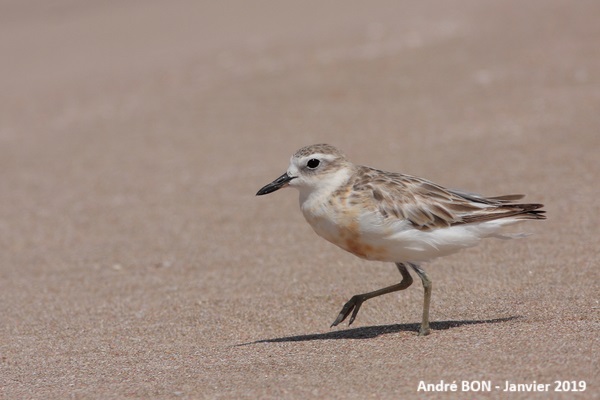


| New Zealand Plover (Anarhynchus obscurus (Gmelin, 1789)) |



|
|
Scientific name: Anarhynchus obscurus (Gmelin, 1789) Common name: New Zealand Plover Other names: New Zealand Dotterel, Red-breasted Dotterel. Old scientific name: Charadrius obscurus. French name: Gravelot roux, Pluvier roux. Order: Charadriiformes Family: Charadriidae Size: Body size: 25 to 28 cm; Weight: 128 to 179 g; Wingspan: 46 to 50 cm. Habitat: Sandy and gravel beaches, river mouths for the North Island subspecies (Anarhynchus obscurus aquilonius). Subalpine meadows up to 300 meters above sea level and coastal areas outside the breeding season for the Stewart Island subspecies (Anarhynchus obscurus obscurus). Food: Aquatic or terrestrial invertebrates pecked on the ground in sand, river mouths or grassy areas. Nesting: The New Zealand Plover nests on the ground in a small depression. There are usually 3 eggs per clutch. Migration: Sedentary. Short-distance movements of the Stewart Island subspecies from subalpine meadows to coastal margins. Geographic area: There are two subspecies: Anarhynchus obscurus obscurus in the south of the South Island and on Stewart Island and Anarhynchus obscurus aquilonius on the North Island. The populations have experienced a very strong decline. The North Island subspecies is listed as Least Concern, but the South Island subspecies is listed as Critically Endangered. |
The New Zealand Plover has a brownish upper part streaked with brown with whitish feather edges. The underside, from the throat to the belly, is orange-brown then white. The forehead and eyebrow are white. The bill is quite long and black. The legs are greenish grey. |
| [To know more about the New Zealand Plover] [Next picture] [Top] |

|
We turned our backs on the crowds of tourists trying to find hot springs under the sand of Hot Water Beach. A sign at the entrance to the beach indicated the presence of the New Zealand Plovers and advised of the precautions to take so as not to disturb them. So we took a leisurely walk on the beach and we came across a few New Zealand Plovers without trying to get too close. |
| [To know more about the New Zealand Plover] [Next picture] [Previous picture] [Top] |

|
We are on the North Island. We are therefore in the presence of the Anarhynchus obscurus aquilonius subspecies. |
| [To know more about the New Zealand Plover] [Previous picture] [Top] |

|
Let's move away, maybe we're disturbing? |